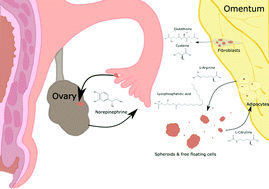Models for measuring metabolic chemical changes in the metastasis of high grade serous ovarian cancer: fallopian tube, ovary, and omentum
Abstract
Ovarian cancer (OC) is the most lethal gynecologic malignancy and high grade serous ovarian cancer (HGSOC) is the most common and deadly subtype, accounting for 70–80% of OC deaths. HGSOC has a distinct pattern of metastasis as many believe it originates in the fallopian tube and then it metastasizes first to the ovary, and later to the adipose-rich omentum. Metabolomics has been heavily utilized to investigate metabolite changes in HGSOC tumors and metastasis. Generally, metabolomics studies have traditionally been applied to biospecimens from patients or animal models; a number of recent studies have combined metabolomics with innovative cell-culture techniques to model the HGSOC metastatic microenvironment for the investigation of cell-to-cell communication. The purpose of this review is to serve as a tool for researchers aiming to model the metastasis of HGSOC for metabolomics analyses. It will provide a comprehensive overview of current knowledge on the origin and pattern of metastasis of HGSOC and discuss the advantages and limitations of different model systems to help investigators choose the best model for their research goals, with a special emphasis on compatibility with different metabolomics modalities. It will also examine what is presently known about the role of small molecules in the origin and metastasis of HGSOC.

- This article is part of the themed collection: Emerging Investigators


 Please wait while we load your content...
Please wait while we load your content...